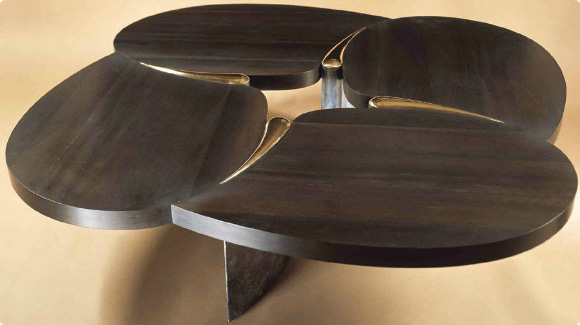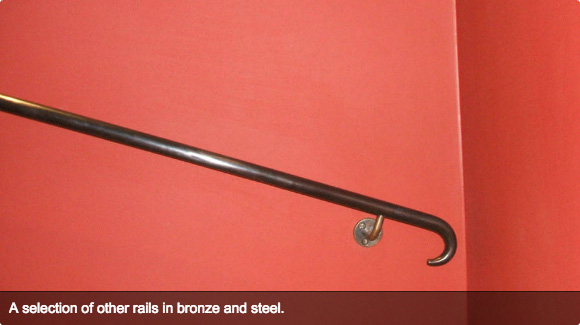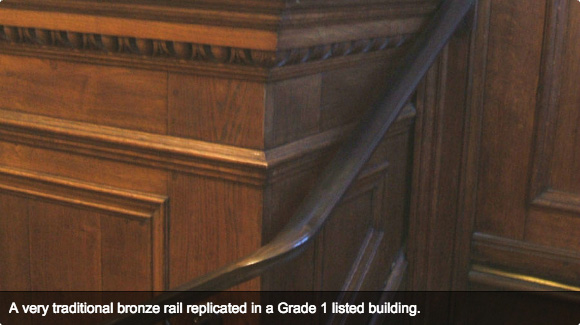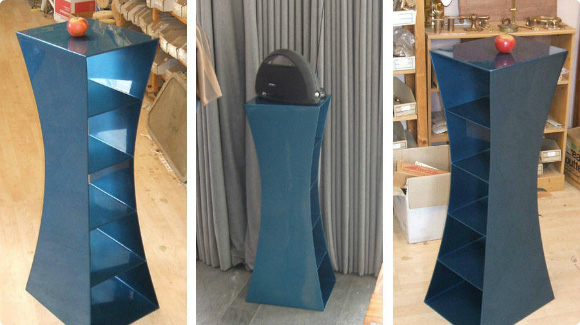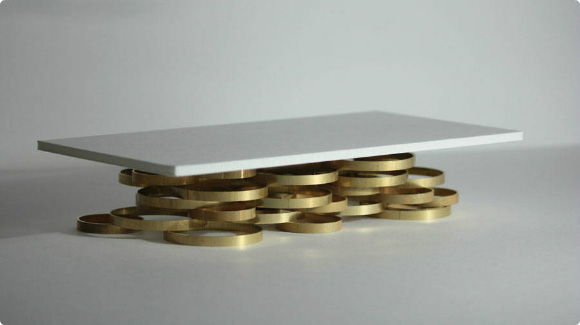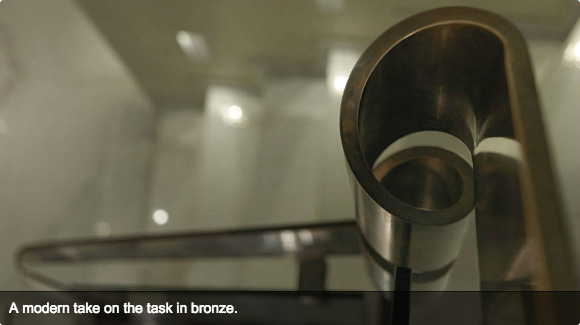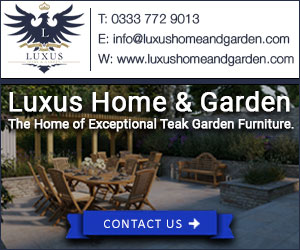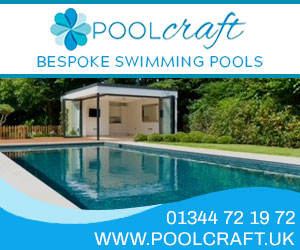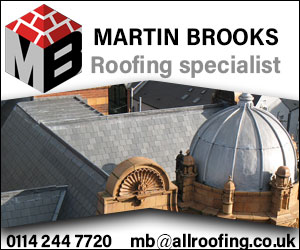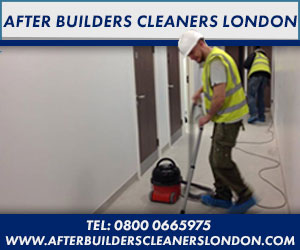Bronzework Contact Details
Telephone
Click to view
Contact
Moray MacPhail
Email
Address
Unit 15, Martlesham Creck
Woodbridge
Suffolk
IP12 4SD
United Kingdom
About Bronzework
What we can do...
In working bronze, we continue a tradition lasting some 5,000 years. For structural use bronze has of course been largely superceded by wrought iron and steel. However its resistance to corrosion and fatigue mean that there remain applications for the various alloys of bronze where their strength is important. Examples include strapping for masonry and marine fittings.
Bronze has always found use in more decorative applications. It is a wonderfully tactile material, which casts well and can also, with modern techniques, be successfully welded. Beyond that the range of surface finishes available, combined with natural or deliberate patination and/or plating, mean that bronze can be formed and finished to suit your needs. The pieces we make combine strength, attractiveness and longevity.
Fabrication in bronze and other metals
One area where things have developed significantly over the past few decades has been the development of welding techniques and materials. We are now able to weld bronze. Not just braze it, but join it by melting and fusing a filler rod of the same composition as the parent metal such that the join is visually and mechanically seamless.
Fabrication enables us to use materials effectively and to make components which might otherwise be prohibitively expensive if casting patterns were needed. It also has the great attribute that castings and fabricated components can be combined into one assembly, allowing us to get the best of both worlds.
Design
More and more we find ourselves needing to co-ordinate the ideas of clients, designers, subcontractors and our own workshops. Sometimes a simple sketch can go straight to production, but it is often useful to work up the design using Computer Aided Design (CAD) to evaluate options and to create working drawings. CAD is a tool, not a substitute for good design, but we do find it helpful for development, as the following examples show.
Patternwork
As well as working metal, we also need to be able to work in other materials to make the necessary patternwork for production. Some examples are shown here.
Sometimes it is straightforward to make a mould from an existing piece where all the tapers run in the same direction, as in these balusters for a church.
Sandcasting - how it is done
Casting of artefacts such as arrowheads was originally done by pouring metal into open moulds, a process not unlike making ice cubes in trays. While the techniques may have advanced some, the idea remains the same, ie to pour molten metal into a shaped hole.
Lost Wax casting
The idea here is to create a version of the desired shape in wax which is encased in a ceramic. The whole thing is then heated so that the wax melts leaving the void into which the metal is poured.
In working bronze, we continue a tradition lasting some 5,000 years. For structural use bronze has of course been largely superceded by wrought iron and steel. However its resistance to corrosion and fatigue mean that there remain applications for the various alloys of bronze where their strength is important. Examples include strapping for masonry and marine fittings.
Bronze has always found use in more decorative applications. It is a wonderfully tactile material, which casts well and can also, with modern techniques, be successfully welded. Beyond that the range of surface finishes available, combined with natural or deliberate patination and/or plating, mean that bronze can be formed and finished to suit your needs. The pieces we make combine strength, attractiveness and longevity.
Fabrication in bronze and other metals
One area where things have developed significantly over the past few decades has been the development of welding techniques and materials. We are now able to weld bronze. Not just braze it, but join it by melting and fusing a filler rod of the same composition as the parent metal such that the join is visually and mechanically seamless.
Fabrication enables us to use materials effectively and to make components which might otherwise be prohibitively expensive if casting patterns were needed. It also has the great attribute that castings and fabricated components can be combined into one assembly, allowing us to get the best of both worlds.
Design
More and more we find ourselves needing to co-ordinate the ideas of clients, designers, subcontractors and our own workshops. Sometimes a simple sketch can go straight to production, but it is often useful to work up the design using Computer Aided Design (CAD) to evaluate options and to create working drawings. CAD is a tool, not a substitute for good design, but we do find it helpful for development, as the following examples show.
Patternwork
As well as working metal, we also need to be able to work in other materials to make the necessary patternwork for production. Some examples are shown here.
Sometimes it is straightforward to make a mould from an existing piece where all the tapers run in the same direction, as in these balusters for a church.
Sandcasting - how it is done
Casting of artefacts such as arrowheads was originally done by pouring metal into open moulds, a process not unlike making ice cubes in trays. While the techniques may have advanced some, the idea remains the same, ie to pour molten metal into a shaped hole.
Lost Wax casting
The idea here is to create a version of the desired shape in wax which is encased in a ceramic. The whole thing is then heated so that the wax melts leaving the void into which the metal is poured.
 UK
UK Ireland
Ireland Scotland
Scotland London
London


